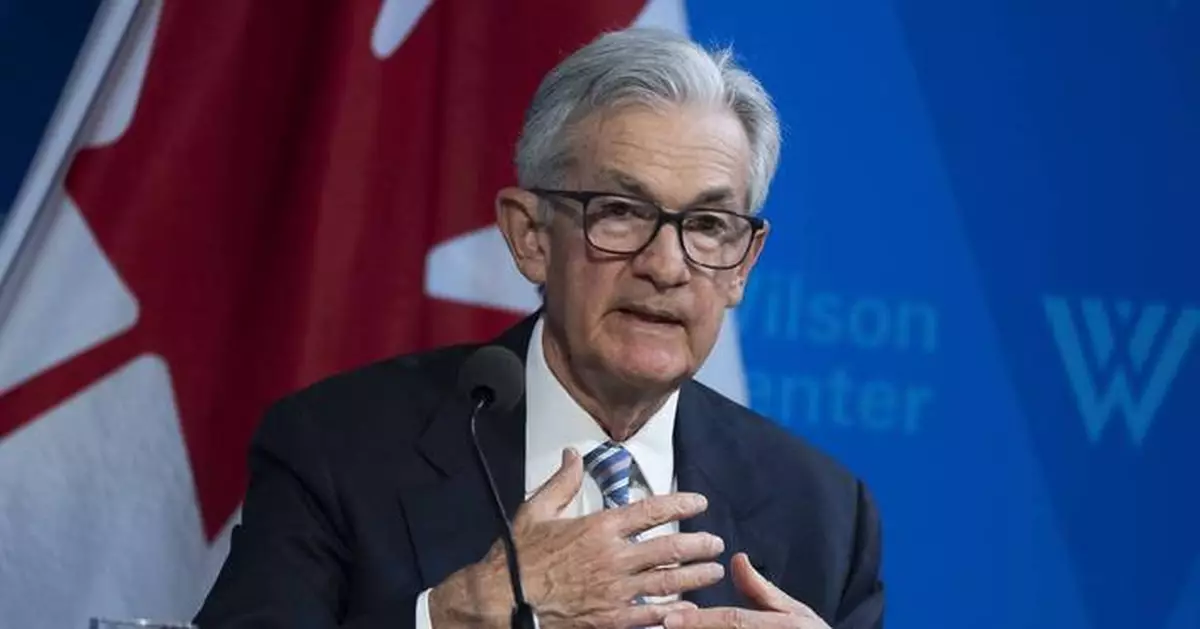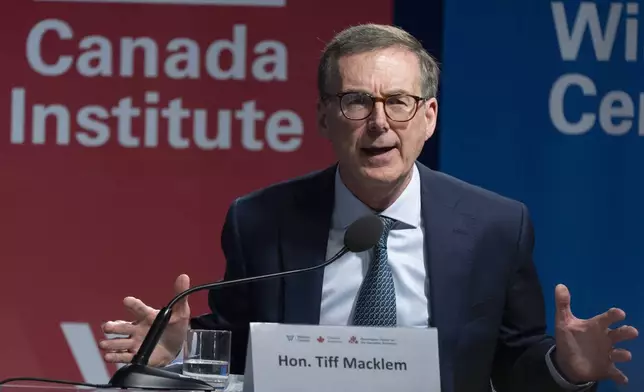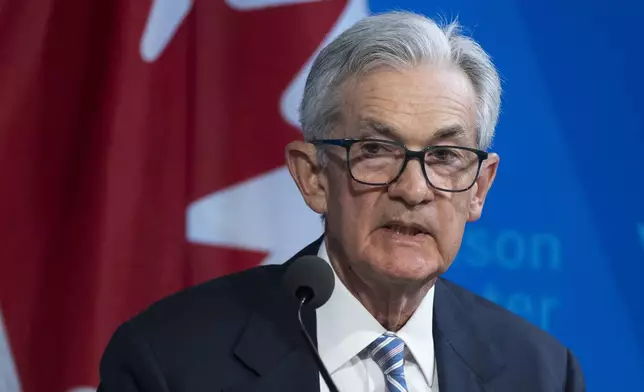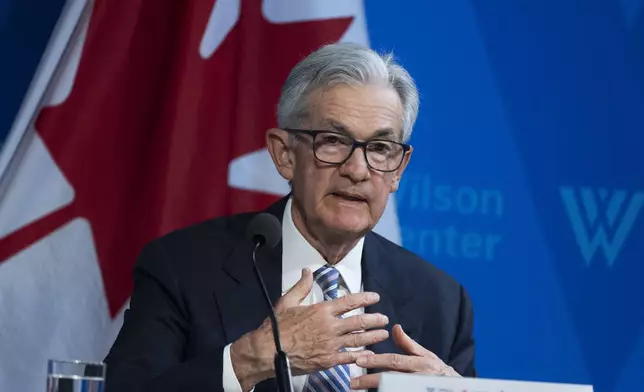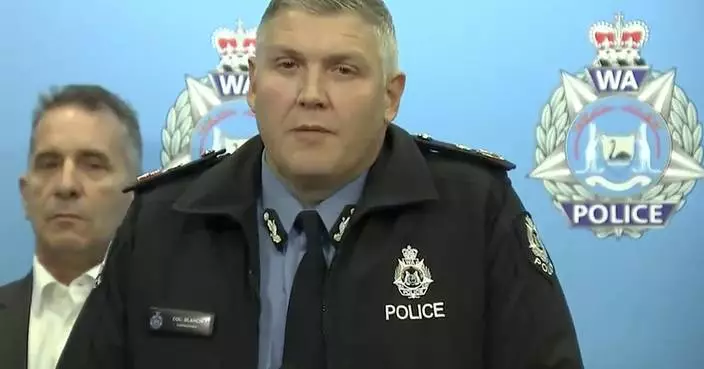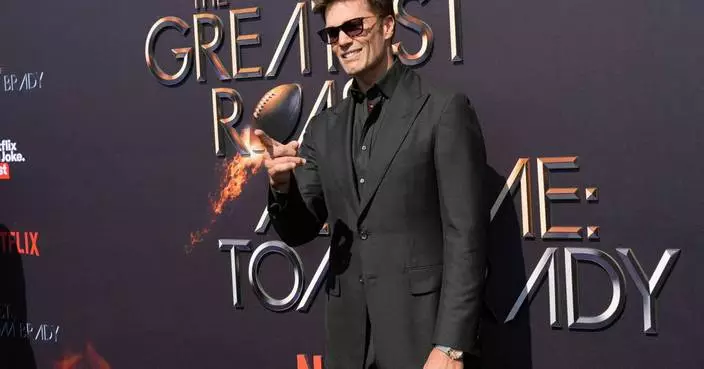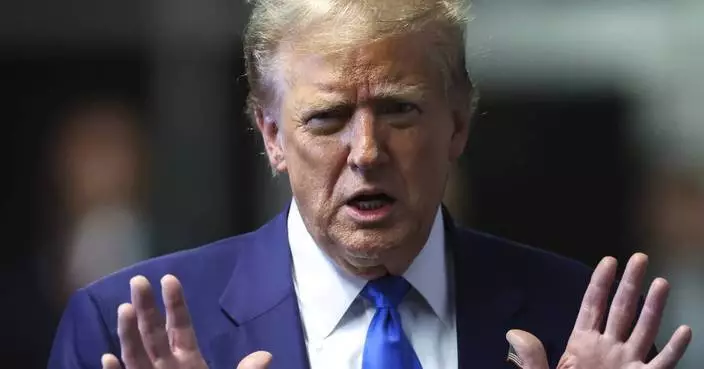WASHINGTON (AP) — Federal Reserve Chair Jerome Powell cautioned Tuesday that persistently elevated inflation will likely delay any Fed interest rate cuts until later this year, opening the door to a period of higher-for-longer rates.
“Recent data have clearly not given us greater confidence" that inflation is coming fully under control and "instead indicate that it’s likely to take longer than expected to achieve that confidence,” Powell said during a panel discussion at the Wilson Center.
Click to Gallery
WASHINGTON (AP) — Federal Reserve Chair Jerome Powell cautioned Tuesday that persistently elevated inflation will likely delay any Fed interest rate cuts until later this year, opening the door to a period of higher-for-longer rates.
Tiff Macklem, Governor of the Bank of Canada, participates in a Washington Forum on the Canadian Economy, together with Federal Reserve Chair Jerome Powell, Wednesday, April 16, 2025, in Washington. (AP Photo/Manuel Balce Ceneta)
Federal Reserve Chair Jerome Powell leaves the stage at the conclusion of a Washington Forum on the Canadian Economy, Wednesday, April 16, 2025, in Washington. (AP Photo/Manuel Balce Ceneta)
Federal Reserve Chair Jerome Powell participates in a Washington Forum on the Canadian Economy, together with Tiff Macklem, Governor of the Bank of Canada, Wednesday, April 16, 2025, in Washington. (AP Photo/Manuel Balce Ceneta)
Federal Reserve Chair Jerome Powell participates in a Washington Forum on the Canadian Economy, together with Tiff Macklem, Governor of the Bank of Canada, Wednesday, April 16, 2025, in Washington. (AP Photo/Manuel Balce Ceneta)
“If higher inflation does persist," he said, “we can maintain the current level of (interest rates) for as long as needed.”
The Fed chair's comments suggested that without further evidence that inflation is falling, the central bank may carry out fewer than the three quarter-point reductions its officials had forecast during their most recent meeting in March.
His remarks Tuesday represented a shift for Powell, who on March 7 had told a Senate committee that the Fed was “not far” from gaining the confidence it needed to cut rates. At a news conference on March 20, Powell appeared to downplay that assertion. But his comments Tuesday went further in dimming the likelihood of any rate cuts in the coming months.
“Powell’s comments make it clear the Fed is now looking past June,” when many economists had previously expected rate cuts to begin, Krishna Guha, an analyst at EvercoreISI, said in a research note.
In the past several weeks, government data has shown that inflation remains stubbornly above the Fed's 2% target and that the economy is still growing robustly. Year-over-year inflation rose to 3.5% in March, from 3.2% in February. And a closely watched gauge of “core” prices, which exclude volatile food and energy, rose sharply for a third straight month.
As recently as December, Wall Street traders had priced in as many as six quarter-point rate cuts this year. Now they foresee only two rate cuts, with the first coming in September.
Powell's comments followed a speech earlier Tuesday by Fed Vice Chair Philip Jefferson, who also appeared to raise the prospect that the Fed would not carry out three cuts this year in its benchmark rate. The Fed's rate stands at a 23-year high of 5.3% after 11 rate hikes beginning two years ago.
Jefferson said he expected inflation to continue to slow this year with the Fed’s key rate “held steady at its current level.” But he omitted a reference to the likelihood of future rate cuts that he had included in a speech in February.
Last month, Jefferson had said that should inflation keep slowing, “it will likely be appropriate” for the Fed to cut rates “at some point this year” — language that Powell has also used. Yet neither Powell or Jefferson made any similar reference Tuesday.
Instead, Powell said only that the Fed could reduce rates “should the labor market unexpectedly weaken.”
Fed officials have responded to recent reports that the economy remains strong and inflation is undesirably high by underscoring that they see little urgency to reduce their benchmark rate anytime soon.
On Monday, the government reported that retail sales jumped last month, the latest sign that robust job growth and higher stock prices and home values are fueling solid household spending. Vigorous consumer spending can keep inflation elevated because it can lead some businesses to charge more, knowing that many people are able to pay higher prices.
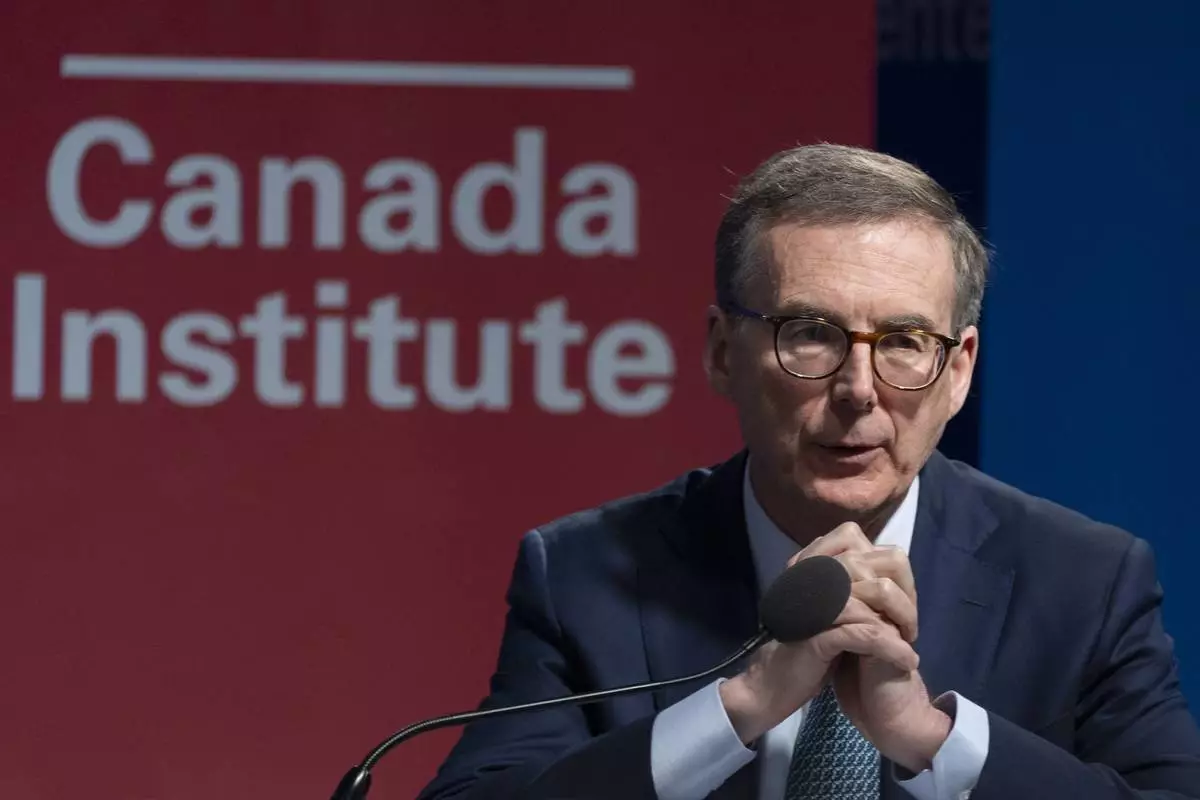
Tiff Macklem, Governor of the Bank of Canada, participates in a Washington Forum on the Canadian Economy, together with Federal Reserve Chair Jerome Powell, Wednesday, April 16, 2025, in Washington. (AP Photo/Manuel Balce Ceneta)

Tiff Macklem, Governor of the Bank of Canada, participates in a Washington Forum on the Canadian Economy, together with Federal Reserve Chair Jerome Powell, Wednesday, April 16, 2025, in Washington. (AP Photo/Manuel Balce Ceneta)
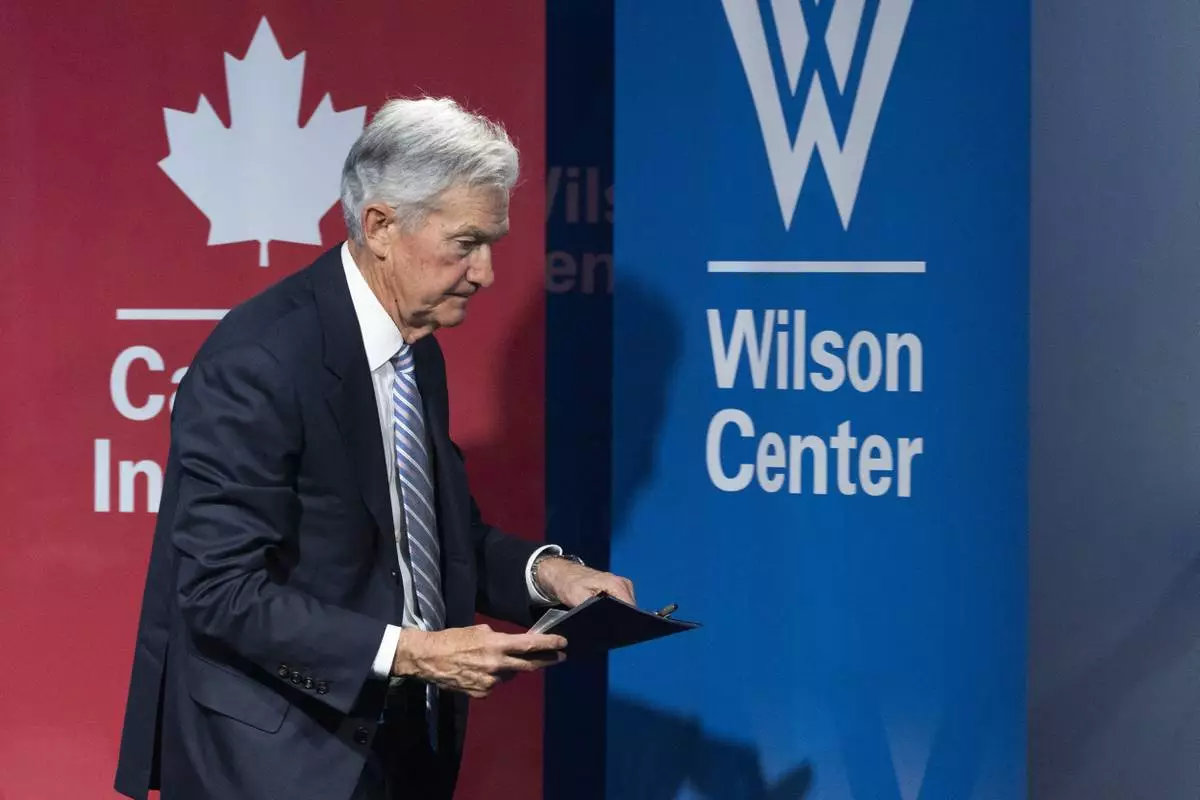
Federal Reserve Chair Jerome Powell leaves the stage at the conclusion of a Washington Forum on the Canadian Economy, Wednesday, April 16, 2025, in Washington. (AP Photo/Manuel Balce Ceneta)

Federal Reserve Chair Jerome Powell participates in a Washington Forum on the Canadian Economy, together with Tiff Macklem, Governor of the Bank of Canada, Wednesday, April 16, 2025, in Washington. (AP Photo/Manuel Balce Ceneta)

Federal Reserve Chair Jerome Powell participates in a Washington Forum on the Canadian Economy, together with Tiff Macklem, Governor of the Bank of Canada, Wednesday, April 16, 2025, in Washington. (AP Photo/Manuel Balce Ceneta)
LITTLE ROCK, Ark. (AP) — When Arkansas lawmakers decided five years ago to replace the statues representing the state at the U.S. Capitol, there was little objection to getting rid of the existing sculptures. The statues that had stood there for more than 100 years were obscure figures in the state's history.
“I remember giving tours to constituents from Arkansas, to young people, and I would point out the two representatives in Statuary Hall in our United States Capitol from Arkansas,” said former Gov. Asa Hutchinson, who also served in Congress. “And they would say, ‘We’ve never heard of them.’”
Instead of two little-known figures from the 18th and 19th centuries, the state will soon be represented by the “Man in Black” and a woman who was instrumental in the fight over school desegregation.
Officials plan to install statues of civil rights leader Daisy Bates this week and musician Johnny Cash later this year.
Bates, who headed the state NAACP, mentored the Black students known as the Little Rock Nine who integrated Central High School in 1957. She is a well-known civil rights figure in Arkansas, where a downtown street in the capital, Little Rock, is named in her honor. The state also marks Daisy Bates Day on Presidents Day.
Benjamin Victor, the Idaho sculptor who was chosen to create the statue of Bates, said he began his work by extensively studying her, including reading her 1962 autobiography and visiting her Little Rock home and Central High. He said he hopes the statue will help U.S. Capitol visitors learn more about her as well.
“I hope it really first and foremost inspires them to study Daisy Bates' life and legacy,” Victor said. “A big part of it is to capture that spirit of hers and inspire others to do the same and stand up for what’s right.”
The 8-foot tall bronze statue depicts Bates, who with her husband published the Arkansas State Press newspaper, walking with a newspaper in her arm. She holds a notebook and pen in one hand and wears a NAACP pin and rose on her lapel.
Cash was born in Kingsland, a tiny town about 60 miles (100 kilometers) south of Little Rock. He died in 2003 at age 71. His achievements include 90 million records sold worldwide spanning country, rock, blues, folk and gospel. He was among the few artists inducted into both the Country Music Hall of Fame and Rock & Roll Hall of Fame.
The 8-foot (2.4-meter) tall statue of Cash depicts the singer with a guitar slung across his back and a Bible in his hand. Little Rock sculptor Kevin Kresse, who was selected to create the statue, has sculpted other musical figures from Arkansas such as Al Green, Glen Campbell and Levon Helm.
Kresse views Cash as a much-needed addition to the Capitol as a counterbalance to the conflict in Congress, he said.
“He walked the walk and he lived what he believed. And that was just this quality that really appealed to me,” Kresse said. “And that interior thoughtfulness was something that I really wanted to try to bring out in this sculpture.”
The Bates and Cash statues will replace ones depicting James P. Clarke, a former governor and U.S. senator in the late 1800s and early 1900s, and Uriah Rose, a 19th century attorney. The statues had come under scrutiny, especially over racist comments Clarke made calling on the Democratic Party to preserve “white standards.”
Republican Sen. Bart Hester, a Republican who is now the Senate president pro tem, began calling for the statues to be replaced in 2018. Clarke Tucker, Clarke's great-great-grandson and a Democratic state senator, also called for his ancestor's statue to come down.
“There was recognition broadly that it was time for a change,” said Hutchinson, who signed the 2019 law requiring the Bates and Cash statues to go up.
Choosing their replacements was the hard part, with lawmakers offering competing ideas ranging from Walmart founder Sam Walton to a Navy SEAL from the state who was killed in Afghanistan. After some wrangling, lawmakers eventually approved Bates and Cash.
Sen. David Wallace, who sponsored the legislation to replace the previous sculptures, said he hoped the new statues would tell people more about the types of figures Arkansas has produced over the years.
“We wanted to do the common person that represented Arkansas,” Wallace said. “And I think that with Daisy Bates and with Johnny Cash, we covered the spectrum in Arkansas. Just, they represent the common folks of Arkansas.”
Associated Press reporter Mike Pesoli contributed to this report.
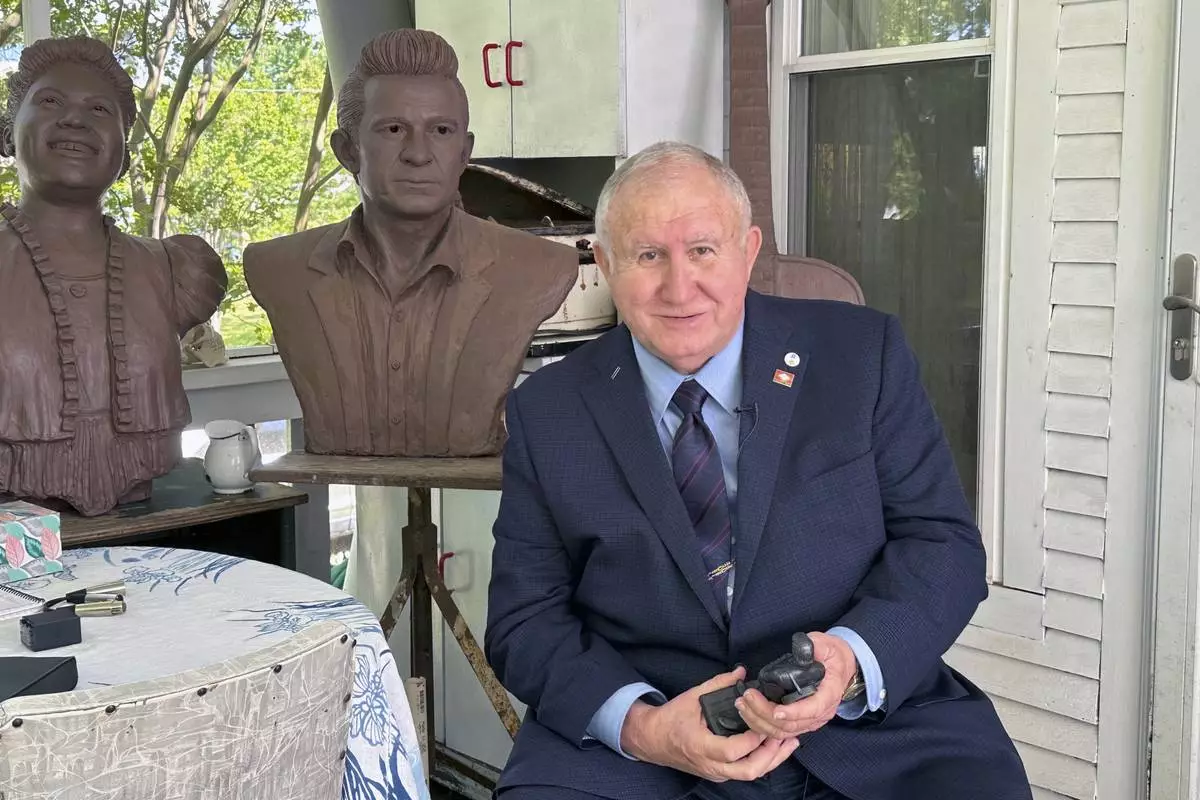
Arkansas State Sen. David Wallace holds a small-scale statue of Johnny Cash, on April 23, 2024, in Little Rock, Ark. Artist Kevin Kresse's full sculpture of Cash will be unveiled at the U.S Capitol as part of the Statuary Hall collection, later this year. (AP Photo/Andrew DeMillo)
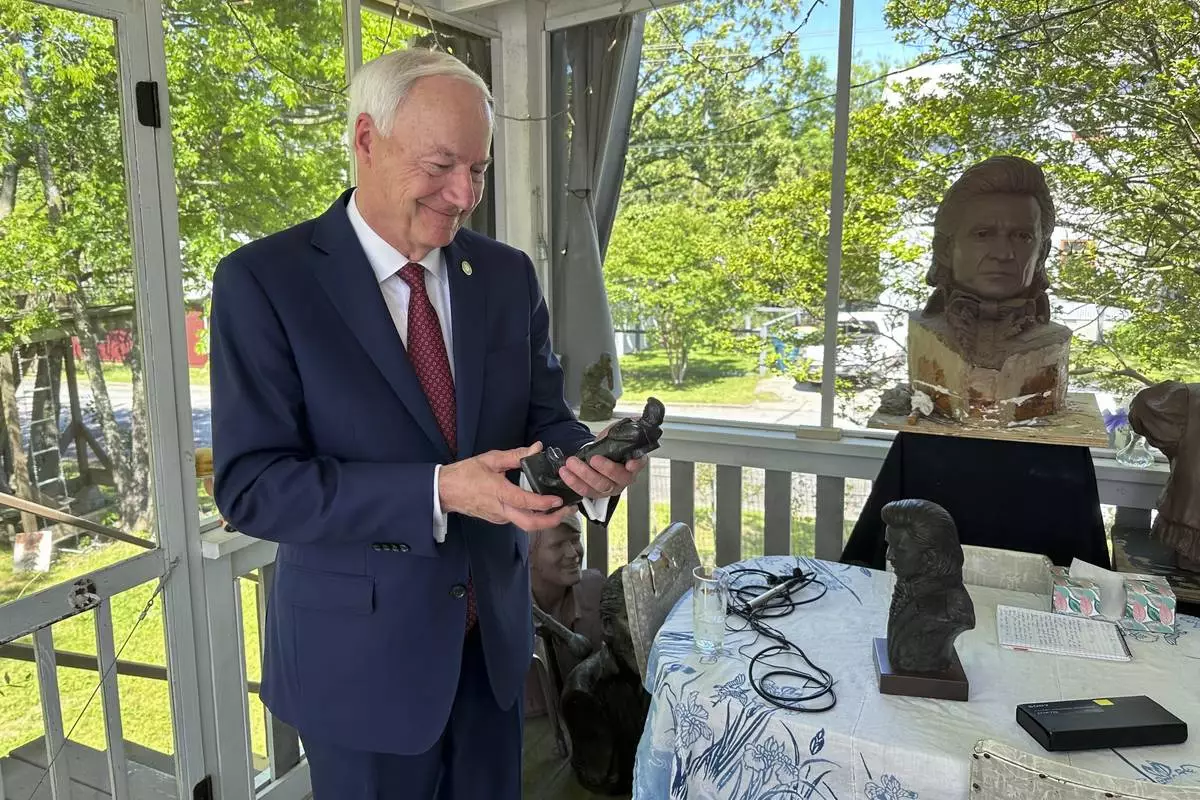
Former Arkansas Gov. Asa Hutchinson holds a small-scale statue of Johnny Cash, on April 23, 2024, in Little Rock, Ark. Artist Kevin Kresse's full sculpture of Cash will be unveiled at the U.S. Capitol as part of the Statuary Hall collection, later this year. (AP Photo/Andrew DeMillo)
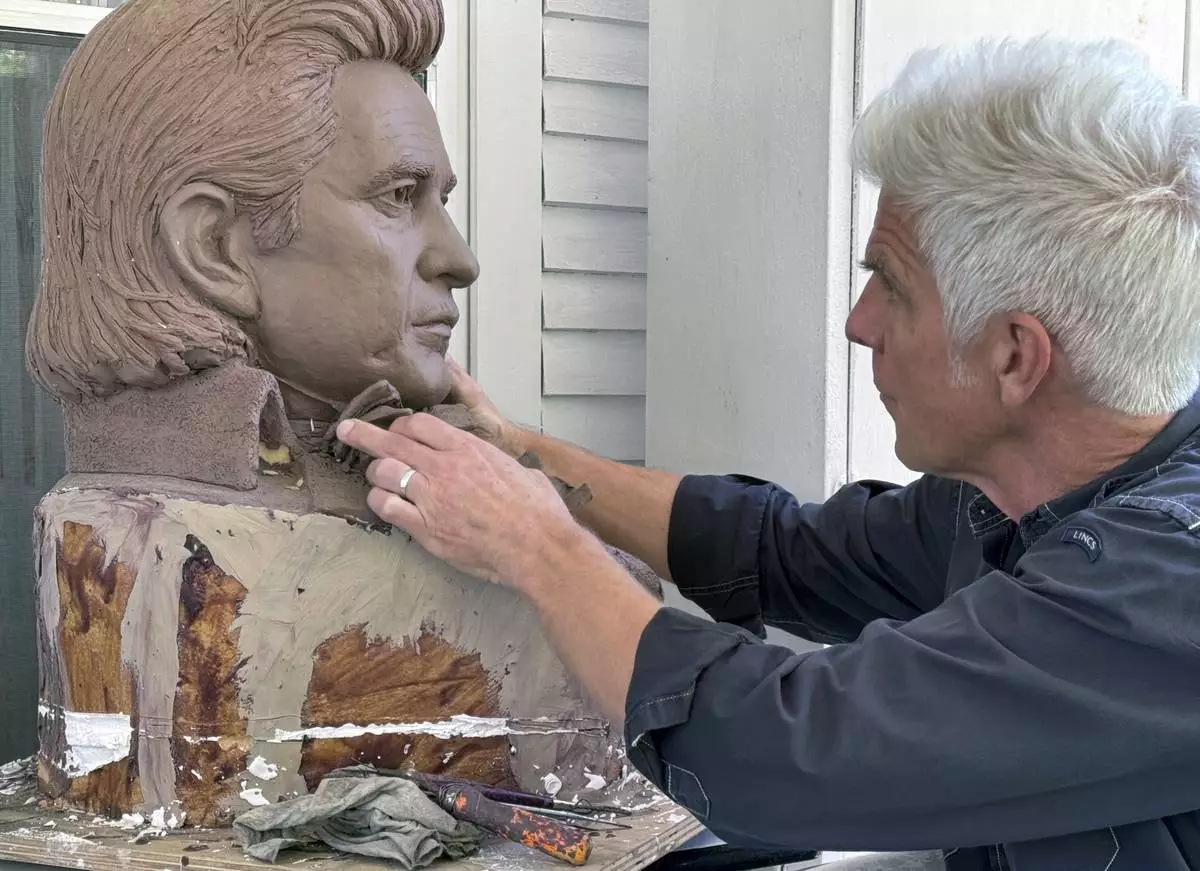
Artist Kevin Kresse, works on a clay bust of Johnny Cash, April 23, 2024 in Little Rock, Ark. Kresse's full sculpture of Cash will be unveiled at the U.S. Capitol as part of the Statuary Hall collection, later this year. (AP Photo/Mike Pesoli)

Artist Kevin Kresse, works on a clay bust of Johnny Cash, April 23, 2024 in Little Rock, Ark. Kresse's full sculpture of Cash will be unveiled at the U.S. Capitol as part of the Statuary Hall collection, later this year. (AP Photo/Mike Pesoli)
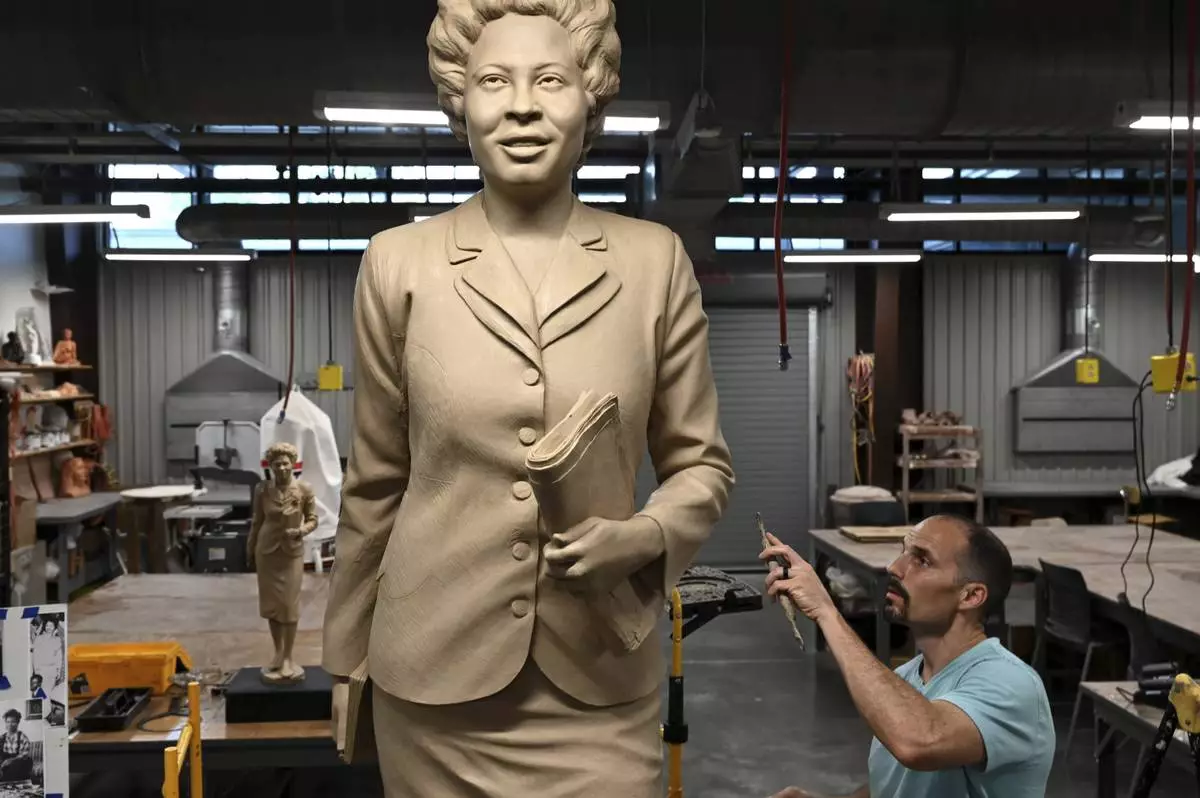
Benjamin Victor works on his sculpture of Daisy Gatson Bates at the Windgate Center of Art and Design at the The University of Arkansas at Little Rock campus on Monday, April 25, 2022, in Little Rock, Ark. The statue will be placed in the Statuary Hall in the United States Capitol when it is completed. (Stephen Swofford/Arkansas Democrat-Gazette via AP)

Artist Kevin Kresse, is shown with a clay bust of Johnny Cash, April 23, 2024 in Little Rock, Ark. Kresse's full sculpture of Cash will be unveiled at the U.S. Capitol as part of the Statuary Hall collection, later this year. (AP Photo/Mike Pesoli)







